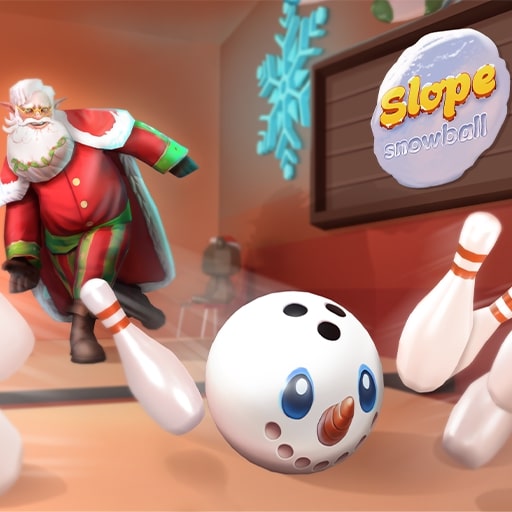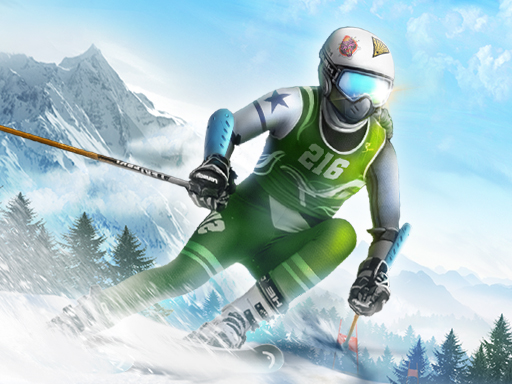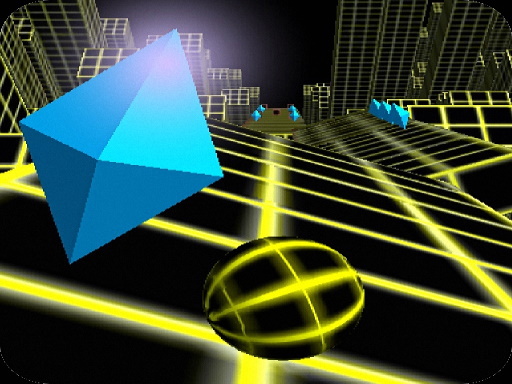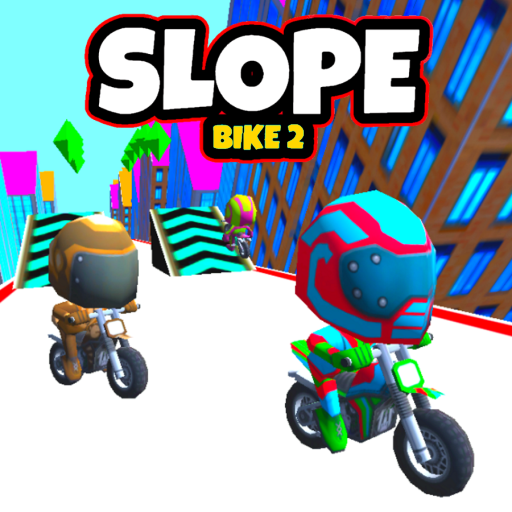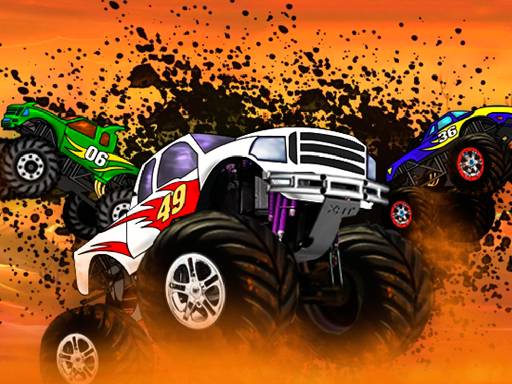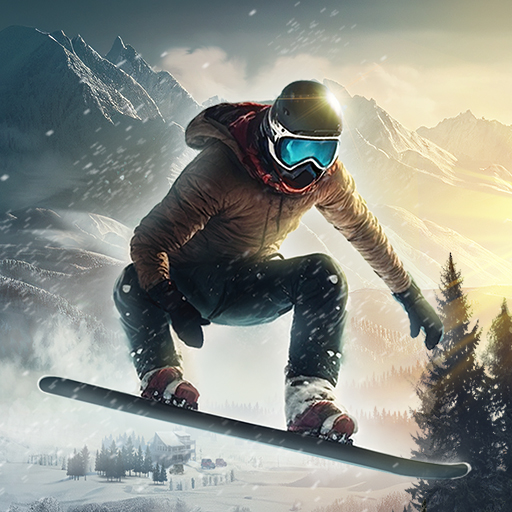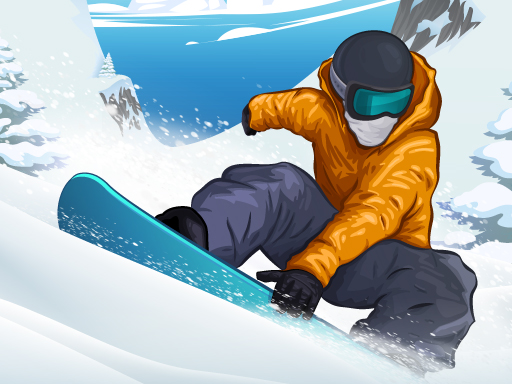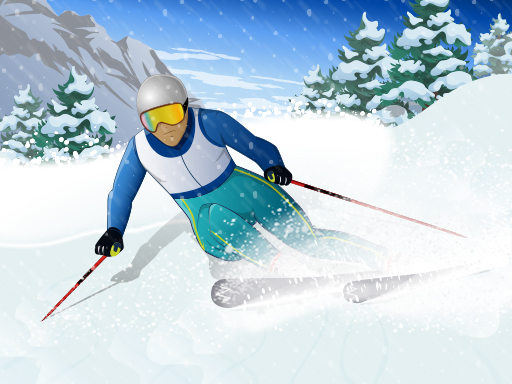
Slope Car Gradient in Gaming and Beyond
The term "Slope Car Gradient" might conjure images of the iconic Slope Game with its rolling ball, but it typically points to a distinct, yet related, subgenre of racing and driving games that put a heavy emphasis on navigating varied terrain and inclines. Unlike the abstract, endless descent of the classic Slope Game, "Slope Car Gradient" titles often involve driving vehicles—usually cars—over realistic or stylized landscapes with significant elevation changes, where understanding and reacting to the "gradient" (or slope) of the road is paramount to success.
This detailed blog post will delve into the world of "Slope Car Gradient" games, exploring their core mechanics, how they differ from the traditional Slope Game, and what makes them an engaging experience for players. We'll also touch upon the real-world implications of "slope" and "gradient" for vehicles, providing a deeper understanding of this fascinating concept.
What is "Slope Car Gradient"? A Shift from Ball to Wheels
While the original Slope Game (often found on slope Y8) focuses on guiding a simple ball down a procedurally generated, obstacle-filled track, "Slope Car Gradient" games pivot to vehicular control. These games typically feature:
- Vehicle Control: Instead of a ball, you're usually controlling a car, truck, or off-road vehicle. This introduces more complex physics, such as suspension, traction, and the impact of weight distribution. The controls usually involve acceleration, braking, and steering, giving players more nuanced command than the simple left/right of the ball game.
- Diverse Terrain: The "gradient" aspect comes into play with varied terrain. Players encounter steep hills, ramps, undulating roads, and sometimes even off-road sections with rocks, mud, or water. The challenge lies in maintaining control, speed, and balance across these dynamic surfaces.
- Physics-Based Gameplay: These games often lean heavily into realistic (or semi-realistic) vehicle physics. Your car's ability to climb a steep slope, maintain speed on a descent, or handle bumps and jumps is directly affected by its design, engine power, tire grip, and the game's physics engine.
- Objective Variety: While some might be endless runners (like "Slope Car" games that focus on continuous racing on a randomized slope with ramps, loops, and obstacles, echoing the "endless" nature of slope run), others could involve completing levels, racing against AI opponents or other players, time trials, or navigating tricky obstacle courses. This offers more diverse challenges than merely surviving for as long as possible.
- Visual Fidelity: Compared to the minimalist aesthetic of the classic Slope Game, "Slope Car Gradient" titles often feature more detailed environments, sophisticated vehicle models, and advanced visual effects (such as particle effects for dust or water, dynamic shadows, and varied weather conditions) to immerse players in the driving experience.
The key differentiator is the emphasis on the vehicle's interaction with the terrain's gradient. Players must consider acceleration on inclines (to avoid stalling), careful braking on declines (to prevent uncontrolled speeding), and the potential for losing control, skidding, or even rolling over on steep or uneven surfaces. This makes them a more complex and often more simulation-oriented experience than the pure reflex test of the original Slope Game.
The Allure of the Climb and Descent: Why "Slope Car Gradient" Appeals
The appeal of "Slope Car Gradient" games lies in their ability to combine the thrill of high-speed racing with the nuanced challenge of off-road or mountain driving.
- Satisfying Physics: There's an inherent satisfaction in perfectly navigating a steep incline, executing a controlled descent, or landing a big jump cleanly. The feeling of the vehicle's weight shifting, its tires gripping (or losing grip), and its suspension responding to the terrain is often a core part of the immersive and rewarding fun. This tactile feedback, even virtual, resonates with players.
- Varied Gameplay: Unlike the singular objective of an endless ball runner, "Slope Car Gradient" games can offer diverse objectives—from reaching checkpoints within a time limit, competing in multi-car races, performing daring stunts, collecting items, or navigating complex maze-like courses. This variety keeps the gameplay fresh and prevents monotony.
- Skill-Based Mastery: Success isn't just about quick reflexes, although they are still important; it's about understanding vehicle dynamics, anticipating terrain changes, choosing the right approach for different gradients and surface types, and executing precise controls. This deeper layer of strategy appeals to players looking for a more cerebral challenge.
- Visual Immersion: More detailed environments, realistic lighting, and intricate vehicle models can provide a more immersive and aesthetically pleasing experience than the abstract visuals of the original Slope Game. Players can often customize their vehicles, adding to the personal investment in the game.
- Sense of Accomplishment: Successfully conquering a particularly difficult gradient, a challenging obstacle course, or winning a tough race against AI opponents feels highly rewarding, offering a tangible sense of progression and mastery.
- Accessibility (Often): Many "Slope Car Gradient" games are designed for mobile platforms or as browser games, making them easily accessible for quick sessions, much like how players access slope unblocked 76 or slope game Y8. This allows for pick-up-and-play convenience that fits into busy schedules.
- Progression Systems: Many of these games include progression systems where players can unlock new vehicles, upgrade existing ones (engine, tires, suspension, brakes), or customize their appearance, adding a long-term motivation beyond just high scores.
The "Slope" and "Gradient": A Real-World Perspective
The terms "slope" and "gradient" are fundamental in mathematics, physics, and engineering, and they have direct real-world applications in vehicle dynamics, which these games simulate with varying degrees of accuracy.
The slope definition in mathematics is the measure of the steepness of a line. It represents the ratio of the vertical change (rise) to the horizontal change (run) between two points on a line. It is commonly expressed as a fraction, a decimal, an angle (in degrees or radians), or a percentage. For instance, a "10% slope" or "10% gradient" means that for every 100 units traveled horizontally, the elevation changes by 10 units vertically.
The slope formula is:
where Δy is the change in vertical position (rise) and Δx is the change in horizontal position (run) between two distinct points (x1,y1) and (x2,y2).
While you might not pull out a slope calculator while playing, the game's physics engine is constantly simulating these real-world interactions. The "slope meaning" in these games is directly tied to the physical challenge of traversing difficult terrain, replicating the forces and challenges faced by real vehicles.
In the context of vehicles and "Slope Car Gradient" games, the concept of slope/gradient has several critical implications:
- Uphill Gradients (Climbing Ability): Driving uphill requires significant engine power and torque to overcome the force of gravity pulling the vehicle backward. The steeper the slope, the more power is needed. This is where a car's "gradability" (its maximum climbing capability) is tested. In games, players must apply sufficient throttle without causing wheelspin.
- Downhill Gradients (Braking and Control): Driving downhill requires careful braking to control speed and prevent the vehicle from accelerating uncontrollably. Engine braking (using the engine's resistance by downshifting) is often used to assist the friction brakes and prevent them from overheating. Uncontrolled descents on very steep slopes can lead to loss of steering and complete loss of control.
- Traction and Grip: The slope of the surface, combined with the surface material (e.g., asphalt, dirt, mud, snow), significantly impacts tire traction. On very steep or slippery surfaces, vehicles can lose grip and slide, even on a slight incline. Games simulate this by requiring players to adjust speed and steering to maintain traction.
- Stability and Rollover Risk: High speeds, sharp turns, or sudden movements on uneven gradients can destabilize a vehicle, leading to rollovers or loss of control, especially in off-road vehicles with a high center of gravity. Players must be aware of their vehicle's balance.
- Suspension Dynamics: A vehicle's suspension system is crucial for absorbing bumps, maintaining tire contact with the ground on undulating slopes, and providing stability. Games with realistic physics will simulate how suspension compresses and extends, affecting handling.
- Fuel Consumption/Efficiency: In more complex simulation games, tackling steep gradients might lead to higher fuel consumption due to the increased power demands.
So, while you might not explicitly use a slope calculator to determine the incline of a digital hill, the game's physics implicitly relies on these mathematical concepts. Mastering a "Slope Car Gradient" game means developing an intuitive understanding of how your vehicle will react to various inclines and declines, much like a real-world driver on challenging roads.
Finding and Playing "Slope Car Gradient" Games
Unlike the single, ubiquitous Slope Game Y8, "Slope Car Gradient" is more of a genre or a descriptive term. You're less likely to find a specific game titled exactly "Slope Car Gradient" on a single platform, but rather games that embody these characteristics.
- Mobile App Stores (Google Play, Apple App Store): This is where you'll find the most readily available games fitting this description. Search for terms like "Slope Car," "Hill Climb Racing" (a very popular example), "Offroad Driving," "Mountain Car Games," or "Gradient Racing." Games like "Slope Car" (by developers like Aronsommer or Proton Studio) specifically mention racing a car on a "randomized slope" with ramps, loops, and obstacles, aligning perfectly with the concept.
- Browser Game Portals: While less common for detailed car physics games, some browser platforms might host simpler "Slope Car" or "Gradient Driving" titles. You might stumble upon them on sites that also host slope Y8 or slope unblocked 76 games.
- PC Gaming Platforms (e.g., Steam, Epic Games Store): More complex simulation or arcade racing games with a strong focus on terrain negotiation can be found here, though they might not explicitly use "Slope Car Gradient" in their titles. Look for games tagged as off-road racing, rally racing, hill climb simulators, or extreme driving. Examples might include titles from the "Spintires" or "MudRunner" series, or rally games with complex terrain.
It's important to differentiate these games from the abstract slope run or slope 2 (which usually refer to the ball game's variants). "Slope Car Gradient" implies a vehicular experience with more complex driving mechanics.
Strategies for Mastering "Slope Car Gradient" Games
Success in "Slope Car Gradient" games requires a blend of precise driving skill, strategic anticipation, and an intuitive understanding of vehicle physics.
- Master Throttle Control: This is paramount. On steep climbs, excessive power can lead to wheelspin, wasting momentum. On descents, too much acceleration will result in uncontrolled speed. Feathering the throttle (gently pressing and releasing) is crucial for maintaining optimal speed and traction.
- Strategic Braking and Engine Braking: Learn when and how much to brake. On long, steep descents, rely on engine braking (downshifting) to control speed and prevent your friction brakes from overheating or fading. This provides smoother, more controlled deceleration.
- Manage Weight Transfer: On jumps, bumps, and steep inclines/declines, pay attention to your car's pitch. Many games allow you to subtly shift weight (e.g., lean forward/backward in the driver's seat, or use specific controls for pitch adjustment) to control your vehicle's angle in the air for smoother landings and to prevent nose-dives or tail-whips.
- Anticipate the Terrain: Always look ahead, beyond the immediate few meters of track. Identify upcoming inclines, declines, sharp turns, jumps, and obstacles. Planning your approach—whether to accelerate into a ramp or brake before a sharp descent—is critical.
- Maintain Traction: This is especially important on loose surfaces or steep gradients. If your wheels are spinning, ease off the throttle. Sometimes, a gentle, consistent application of power is more effective than bursts.
- Utilize Momentum Wisely: Carrying sufficient speed into an incline can help you climb without losing too much momentum. However, too much speed can lead to a crash on the other side of a crest or a lost opportunity to adjust for subsequent obstacles. Find the balance.
- Choose the Right Path: On some terrains, there might be multiple routes. One might be steeper but shorter, another longer but less hazardous. Learning to assess the gradient of each path and choose the optimal one for your vehicle and skill level is a key strategy.
- Upgrade Your Vehicle (if applicable): If the game includes a progression system, prioritize upgrades that enhance your vehicle's performance on gradients. Engine power is essential for climbing, improved brakes for descending, and enhanced suspension for handling rough, undulating terrain.
- Practice Makes Perfect: These games have a learning curve. Don't get discouraged by early crashes. Each attempt helps you learn the physics, the controls, and common terrain patterns.
Pros and Cons of "Slope Car Gradient" Games
Like any genre, "Slope Car Gradient" games have their distinct strengths and weaknesses.
Pros:
- Engaging Physics-Based Gameplay: The interaction of vehicles with varied terrain offers a satisfying and often highly realistic (or semi-realistic) driving experience that goes beyond simple arcade mechanics.
- Skill-Intensive and Deep: Requires more than just fast reflexes. It demands an understanding of vehicle dynamics, precise control, momentum management, and strategic terrain negotiation, appealing to players seeking a deeper challenge.
- Varied Challenges: Often feature different game modes (races, time trials, obstacle courses), diverse vehicle types (cars, trucks, ATVs), and varied environmental challenges, providing a broad range of gameplay experiences.
- Visually Immersive: Tend to have more detailed graphics, realistic environments, and impressive visual effects (dust, mud, weather) compared to abstract ball-based games, enhancing player immersion.
- Strong Sense of Accomplishment: Successfully conquering a particularly difficult gradient, a challenging obstacle course, or winning a tough race against AI opponents or other players feels highly rewarding, offering a tangible sense of progression and mastery.
- Accessibility: Many titles are available on mobile platforms (iOS, Android) or as browser games, making them easy to pick up and play for quick sessions.
- Customization and Progression: Many games in this subgenre offer extensive vehicle customization and upgrade systems, providing long-term motivation for players to grind for in-game currency or achievements.
Cons:
- Can Be Frustrating: The realistic (or semi-realistic) physics can be unforgiving. Frequent crashes, rollovers, or getting stuck on difficult terrain can lead to high levels of frustration for players, especially newcomers.
- Steep Learning Curve: Mastering vehicle control, understanding how different gradients affect performance, and adapting to varied terrain types can take significant time and practice, potentially deterring casual players.
- Repetitive (for some): If the game lacks sufficient variety in courses, vehicle types, or game modes, the core loop of driving over gradients can eventually become monotonous for some players over very long play sessions.
- Performance Demands: Games with more complex 3D graphics and sophisticated physics engines might require more capable hardware (especially on PC) than simple browser games like slope game Y8.
- Monetization (in free-to-play): Many free-to-play mobile versions heavily rely on advertising or in-app purchases (for faster progression, new vehicles, or cosmetics), which can sometimes disrupt the gameplay experience or feel exploitative.
- Less Direct Connection to "Slope Game": While the name incorporates "Slope," the gameplay is quite different from the classic Slope Game. Players looking for a direct "Slope 2" or "Slope 3" experience might be disappointed.
Frequently Asked Questions about "Slope Car Gradient"
Q1: What kind of game is "Slope Car Gradient"?
A1: "Slope Car Gradient" generally refers to games where you drive a car, truck, or other vehicle over varied terrain with significant inclines (gradients) and declines. These games focus on realistic or semi-realistic vehicle physics, requiring players to master control, speed, and balance on challenging slopes.
Q2: Is "Slope Car Gradient" the same as the classic Slope Game?
A2: No, they are distinct. The classic Slope Game (often played on slope Y8) involves guiding a rolling ball down an abstract, procedurally generated track using simple left/right steering. "Slope Car Gradient" games focus on controlling a car with more complex physics (acceleration, braking, suspension) and navigating realistic or stylized gradients, jumps, and obstacles.
Q3: Where can I find "Slope Car Gradient" games?
A3: You are most likely to find these types of games on mobile app stores (Google Play, Apple App Store) by searching for terms like "Slope Car," "Hill Climb Racing," "Offroad Driving," or "Mountain Car Games." Some browser game sites might also host simpler versions.
Q4: Do "Slope Car Gradient" games use the "slope formula"?
A4: While you won't use a slope calculator directly during gameplay, the game's physics engine fundamentally relies on the mathematical slope definition (steepness) to simulate how your car interacts with inclines, declines, and jumps. The slope equation dictates how gravity, momentum, and vehicle power affect your car on different gradients.
Q5: Is there a "Slope Car Gradient Unblocked 76" version?
A5: The term "slope unblocked 76" typically refers to the classic ball game. However, it's possible that some "unblocked games" websites might host "Slope Car" type games. You would need to search specifically for "Slope Car unblocked" or similar terms on those sites.
Q6: Is "Slope Car Gradient" related to "Slope 2" or "Slope 3"?
A6: Not directly. "Slope 2" and "Slope 3" usually refer to updated versions, variants, or unofficial sequels of the original ball-based Slope Game. "Slope Car Gradient" is a distinct subgenre focused on vehicular driving and terrain negotiation, rather than a direct continuation of the ball game series.
Q7: What is the "slope meaning" in "Slope Car Gradient" games?
A7: In these games, the "slope meaning" directly refers to the literal steepness, incline, or gradient of the terrain you are driving on. Understanding how your car will react to different uphill and downhill slopes, as well as uneven surfaces, is crucial for maintaining control, traction, and making progress.
Q8: Are "Slope Car Gradient" games typically free to play?
A8: Many "Slope Car Gradient" games, especially those found on mobile app stores, are free-to-play, often generating revenue through in-game advertisements or optional in-app purchases for vehicle upgrades or customization.
Q9: What makes "Slope Car Gradient" games challenging?
A9: The challenge arises from the need to balance speed, precise throttle control, effective braking, and nuanced steering to navigate continuously changing gradients, avoid obstacles, and maintain vehicle stability on varied and often treacherous terrain. Physics play a significant role.
Q10: Can "Slope Car Gradient" games help improve my driving skills?
A10: While not a direct substitute for real-world driving lessons, these games can certainly enhance your understanding of basic vehicle dynamics, reaction time, and decision-making under pressure, particularly concerning how vehicles behave on different inclines, declines, and challenging surfaces.
Conclusion: The Road Less Levelled
"Slope Car Gradient" games offer a compelling evolution for fans of physics-based challenges, shifting from the abstract simplicity of the rolling ball to the nuanced complexities of vehicular traversal. They provide a unique blend of racing thrill, strategic driving, and an intuitive understanding of real-world physics. Whether you're conquering a digital mountain, perfecting your descent, or carefully navigating a rocky trail, these games offer a satisfying and often challenging experience. So, buckle up, hit the gas, and prepare to master the ever-changing gradients that lie ahead on the digital road.

